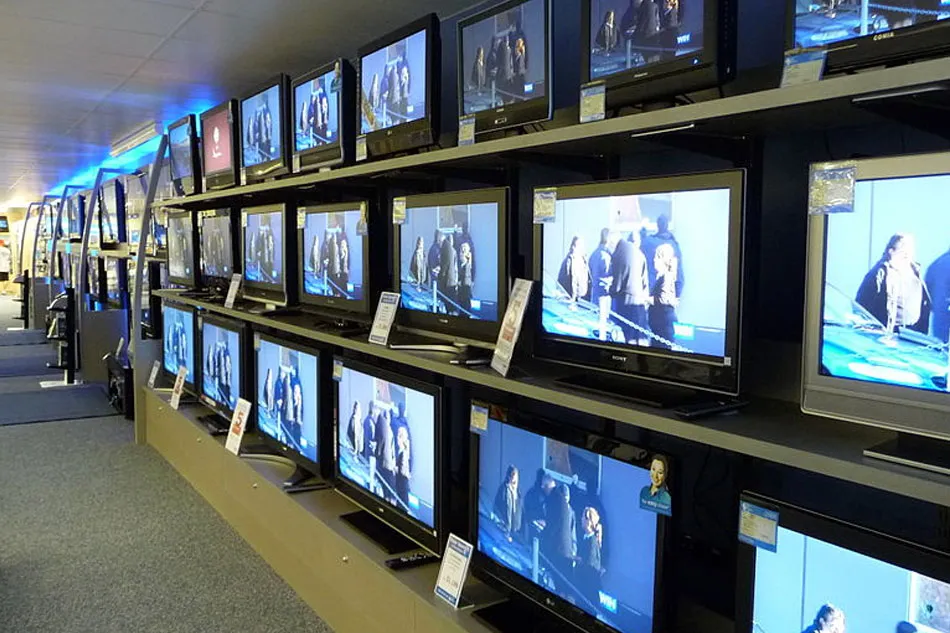This content was deleted by the author. You can see it from Blockchain History logs.
LeoGlossary: Small Screen
How to get a Hive Account

When people in Hollywood or the entertainment industry refer to the "small screen," they are typically talking about television, as opposed to the "big screen," which refers to movies shown in theaters. The distinction between the small and big screens has been a traditional way to differentiate between television and cinematic productions.
In recent years, however, the line between the two has become more blurred with the rise of streaming services. Streaming platforms like Netflix, Hulu, and Amazon Prime Video produce original content that is often considered high-quality and can be viewed on various devices, including TVs, computers, tablets, and smartphones. This has led to a shift in the way people consume content, and the term "small screen" may not be as accurate or meaningful as it once was.
History
The history of the small screen, or television, is a fascinating journey that spans over a century. Here are some key milestones in the development of the small screen:
- Early Concepts (late 19th to early 20th century): The concept of transmitting images and sounds over a distance dates back to the late 19th century. Inventors like Paul Nipkow, Boris Rosing, and Charles Francis Jenkins contributed to early mechanical television systems.
- Electronic Television (1920s-1930s): The development of electronic television accelerated in the 1920s. Philo Farnsworth, a key figure, demonstrated the first working electronic television system in 1927. RCA's David Sarnoff played a crucial role in the development of television as well.
- World war II Impact (1939-1945): Television development was temporarily halted during World War II as resources were redirected for the war effort. After the war, television became more accessible to the public.
- Post-War Boom (1940s-1950s): The late 1940s and the 1950s saw the rapid growth of television as a medium for entertainment and information. The introduction of commercial broadcasting and the popularity of shows like "I love Lucy" marked this period.
- The Golden Age of Television (1950s-1960s): Television became a central part of American culture during this period. Iconic shows such as "The Twilight Zone," "The Honeymooners," and "Gunsmoke" emerged. The medium expanded globally during this time.
- Color Television (1950s-1960s): Black-and-white television was the norm until the introduction of color television. The transition to color broadcasts took place in the 1960s.
- Cable and Satellite Television (1970s-1980s): The 1970s and 1980s brought the advent of cable and satellite television, providing viewers with more channels and specialized content. Cable networks like HBO and CNN transformed the television landscape.
- Remote Controls and VCRs (1970s-1980s): Technological advancements such as remote controls and video Cassette Recorders (VCRs) changed the way people interacted with and consumed television content.
- Digital Television and HDTV (1990s-2000s): The transition from analog to digital television took place in the late 20th century, providing improved picture and sound quality. High Definition Television (HDTV) became more widespread in the 2000s.
- Streaming Era (2010s-Present): The 2010s marked the rise of streaming services like Netflix, Hulu, and Amazon Prime Video, challenging traditional television models. Viewers began to consume content on a variety of devices, further blurring the lines between television and other forms of digital media.
- Smart TVs and 4K (2010s-Present): The integration of smart technology into televisions, allowing for Internet connectivity and app functionality, became prevalent. Additionally, 4K resolution and other advanced display technologies have enhanced the viewing experience.
The history of the small screen is characterized by technological innovation, cultural impact, and shifts in how audiences consume content. Television continues to evolve with ongoing advancements in technology and changes in viewer preferences.
General:
